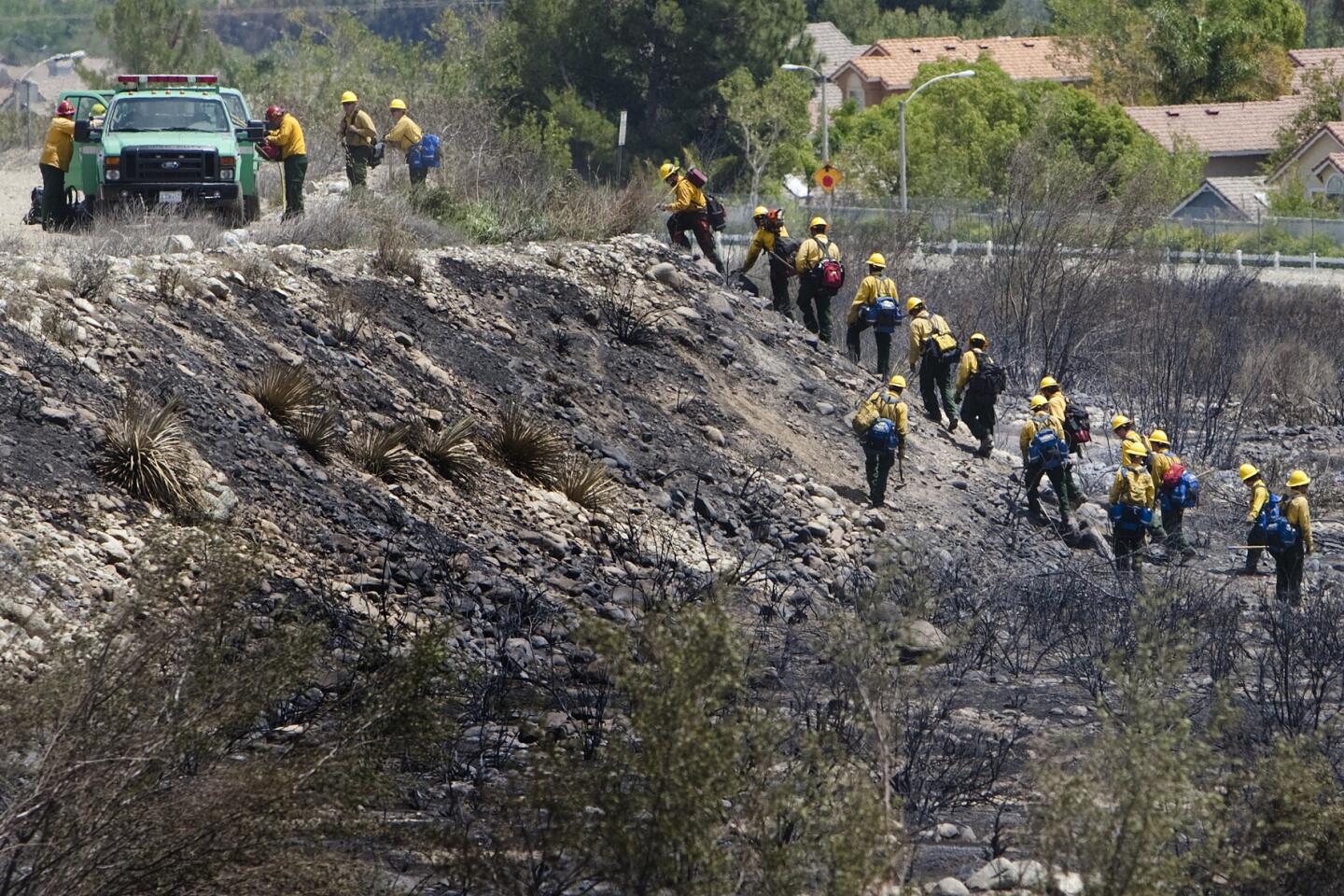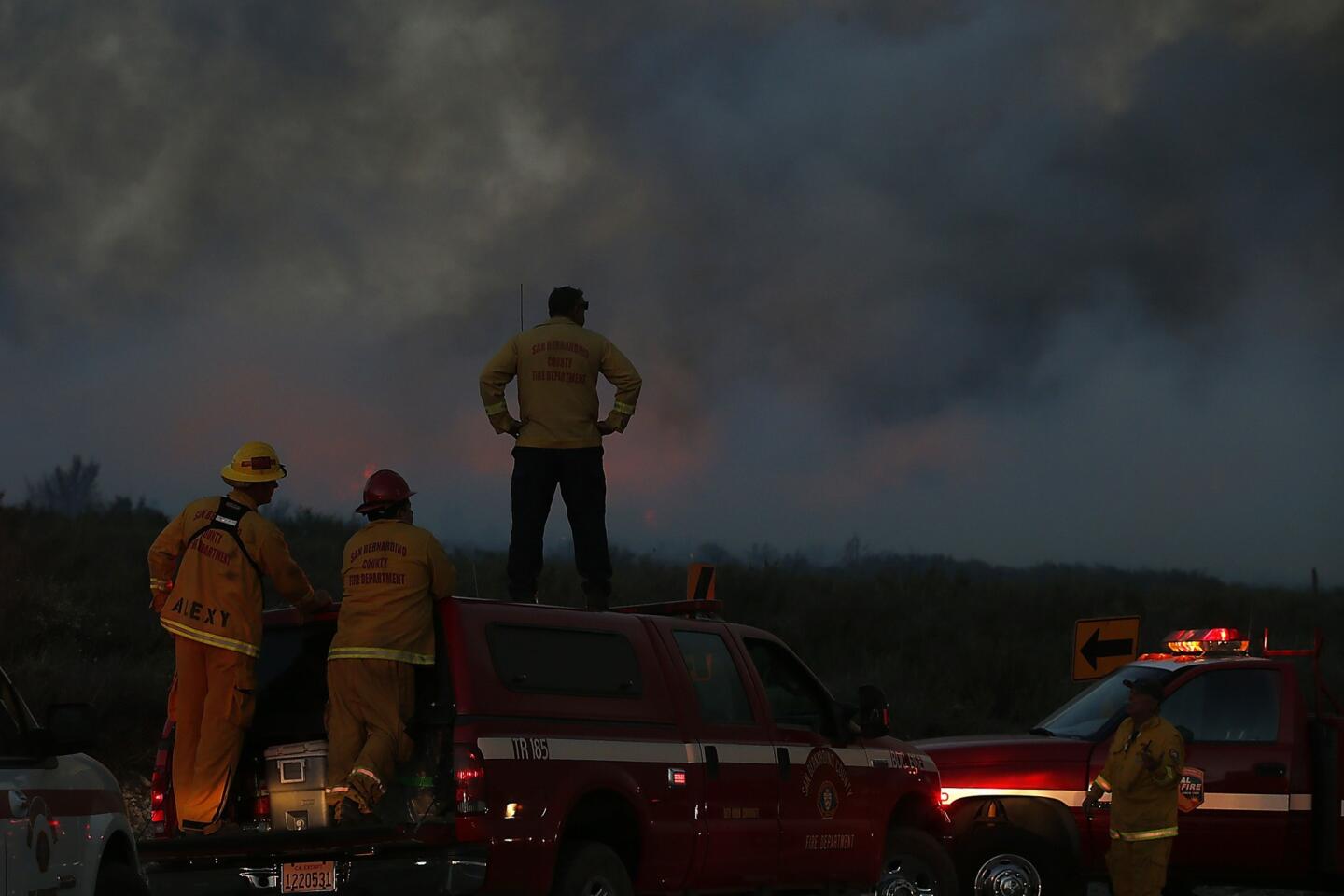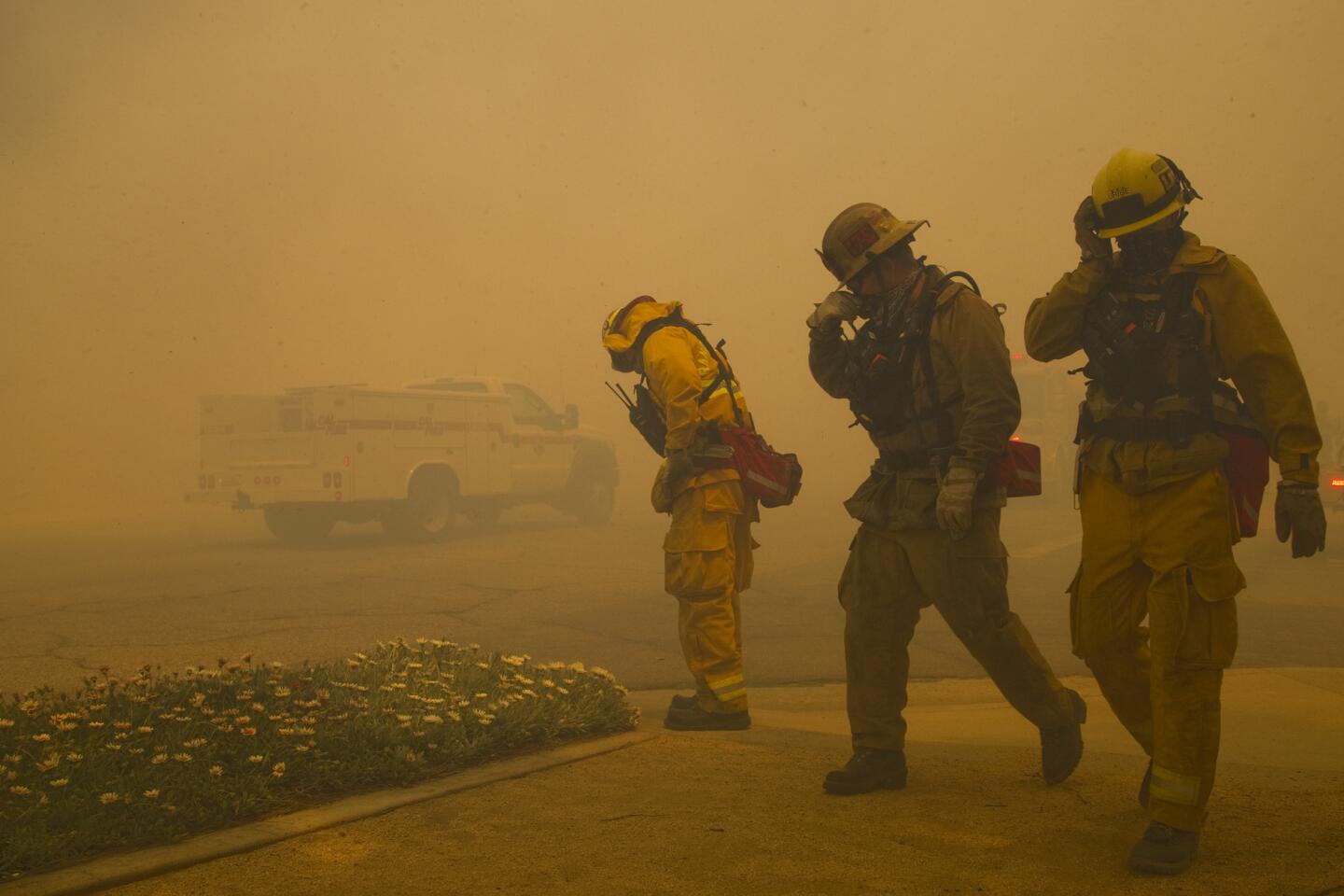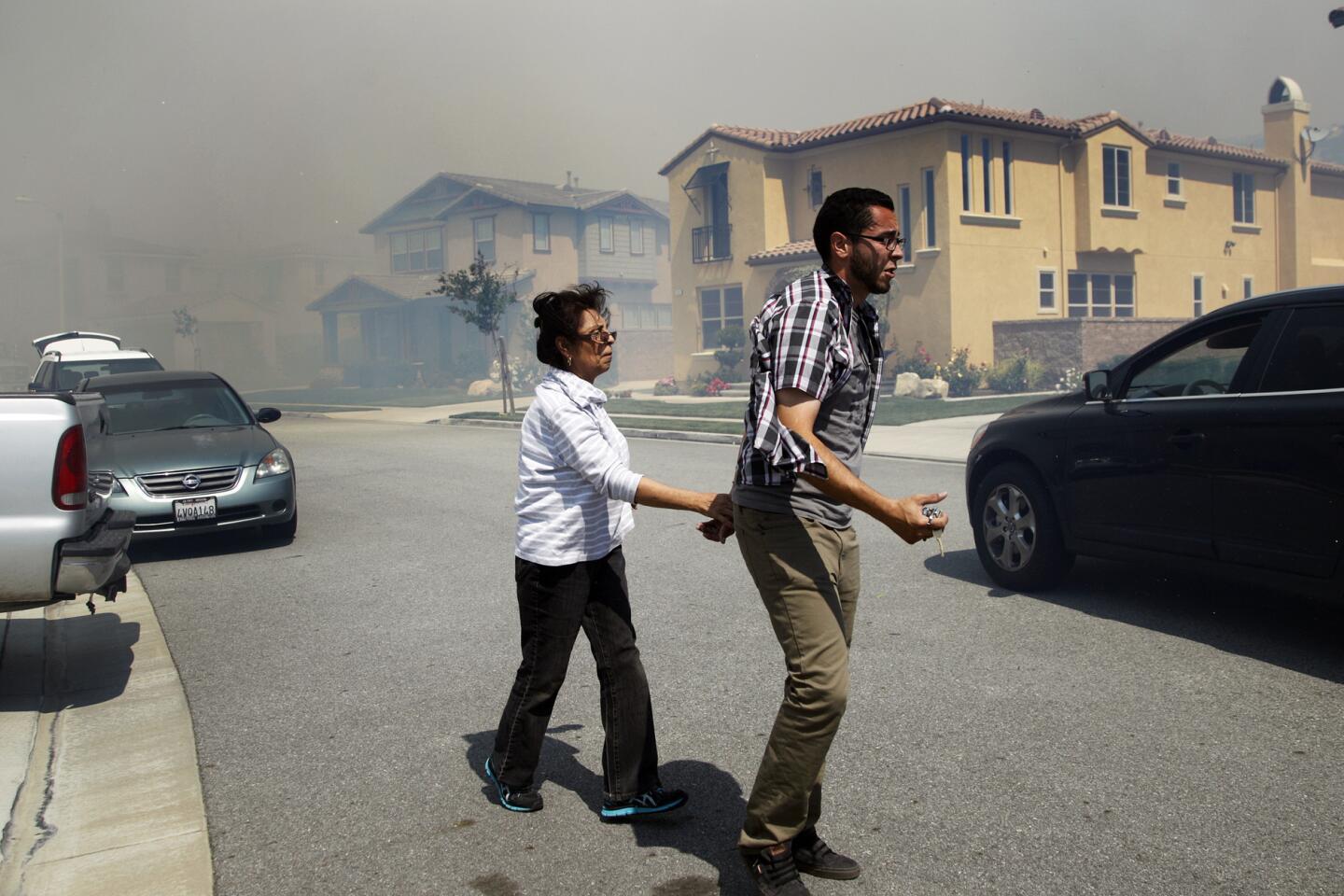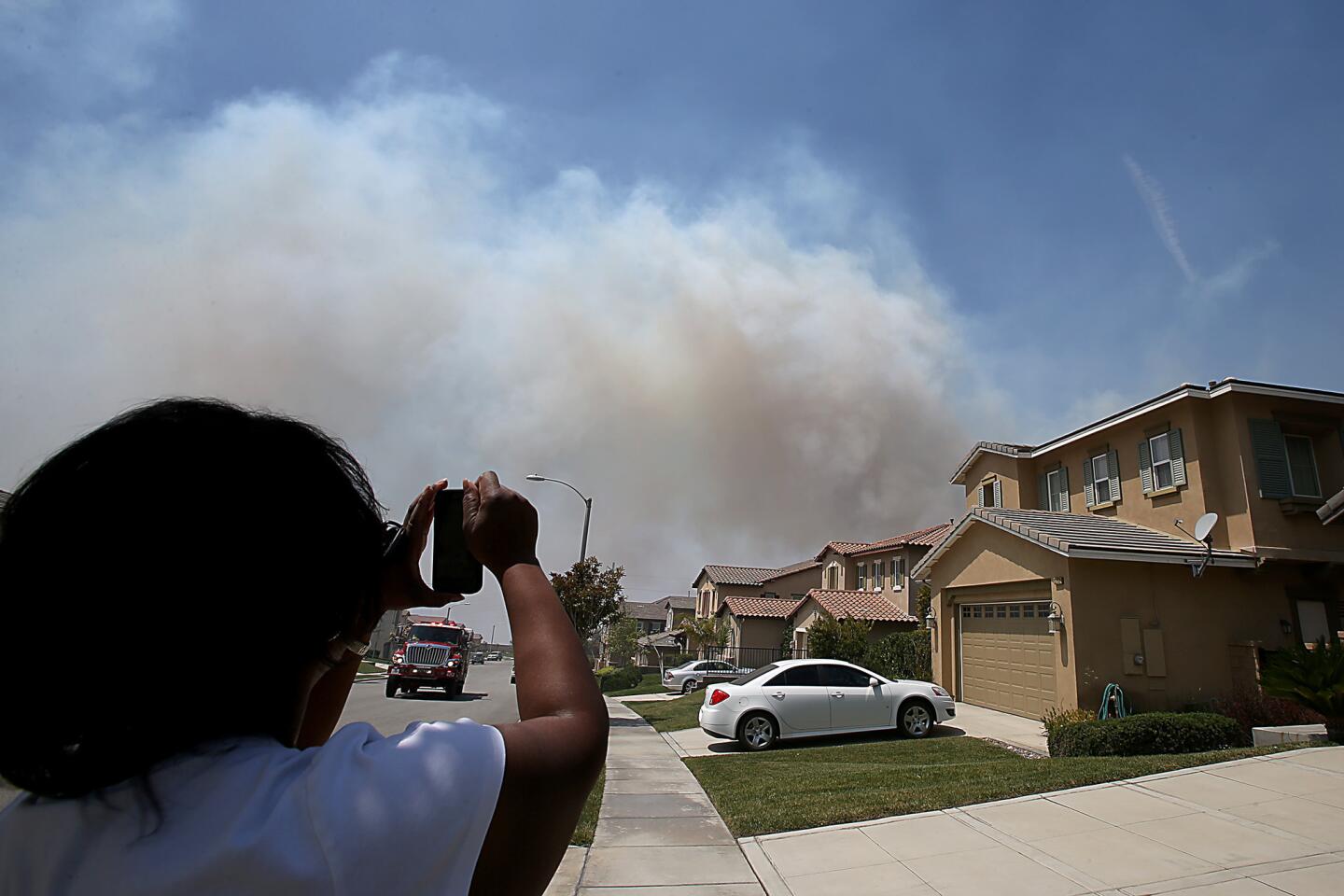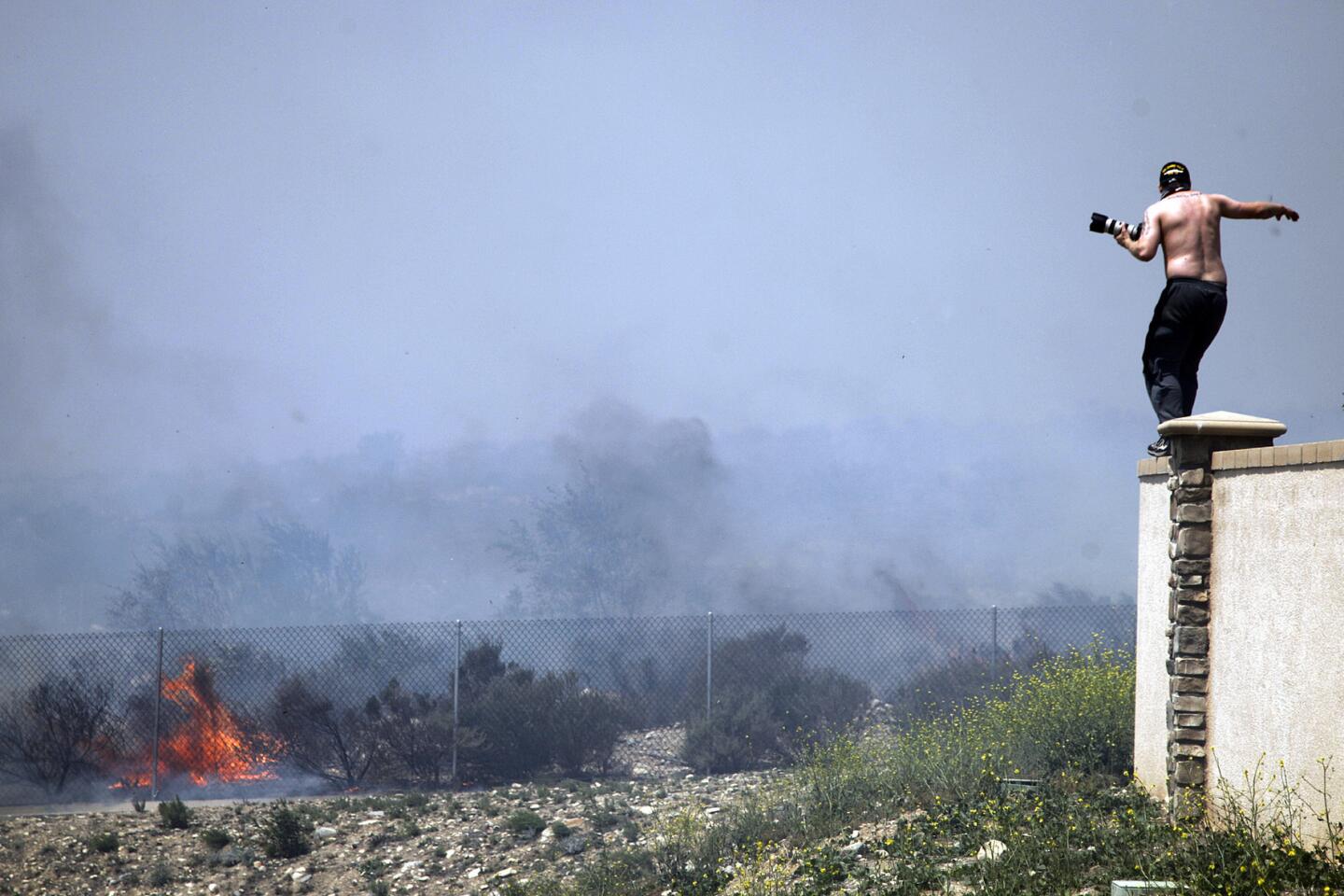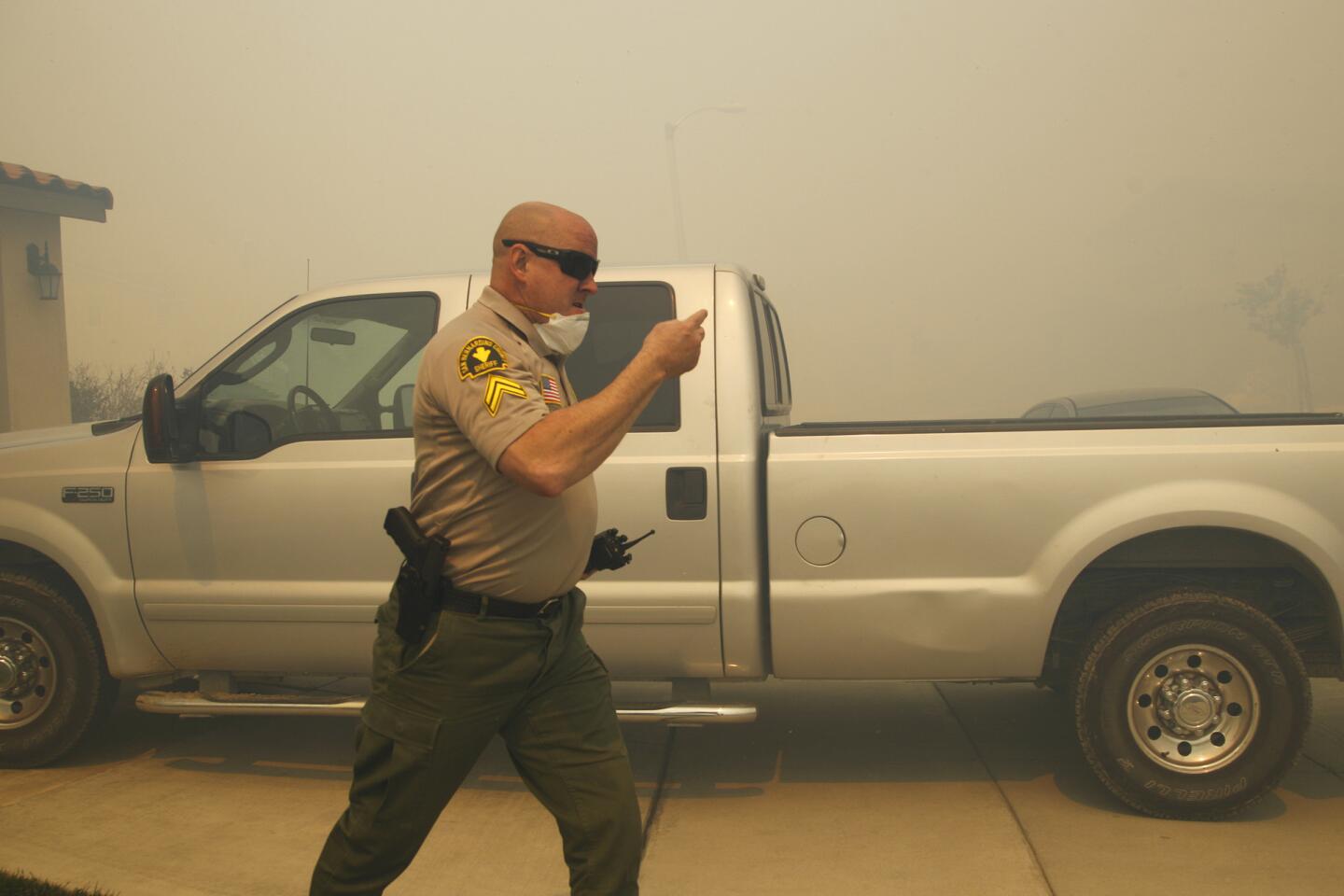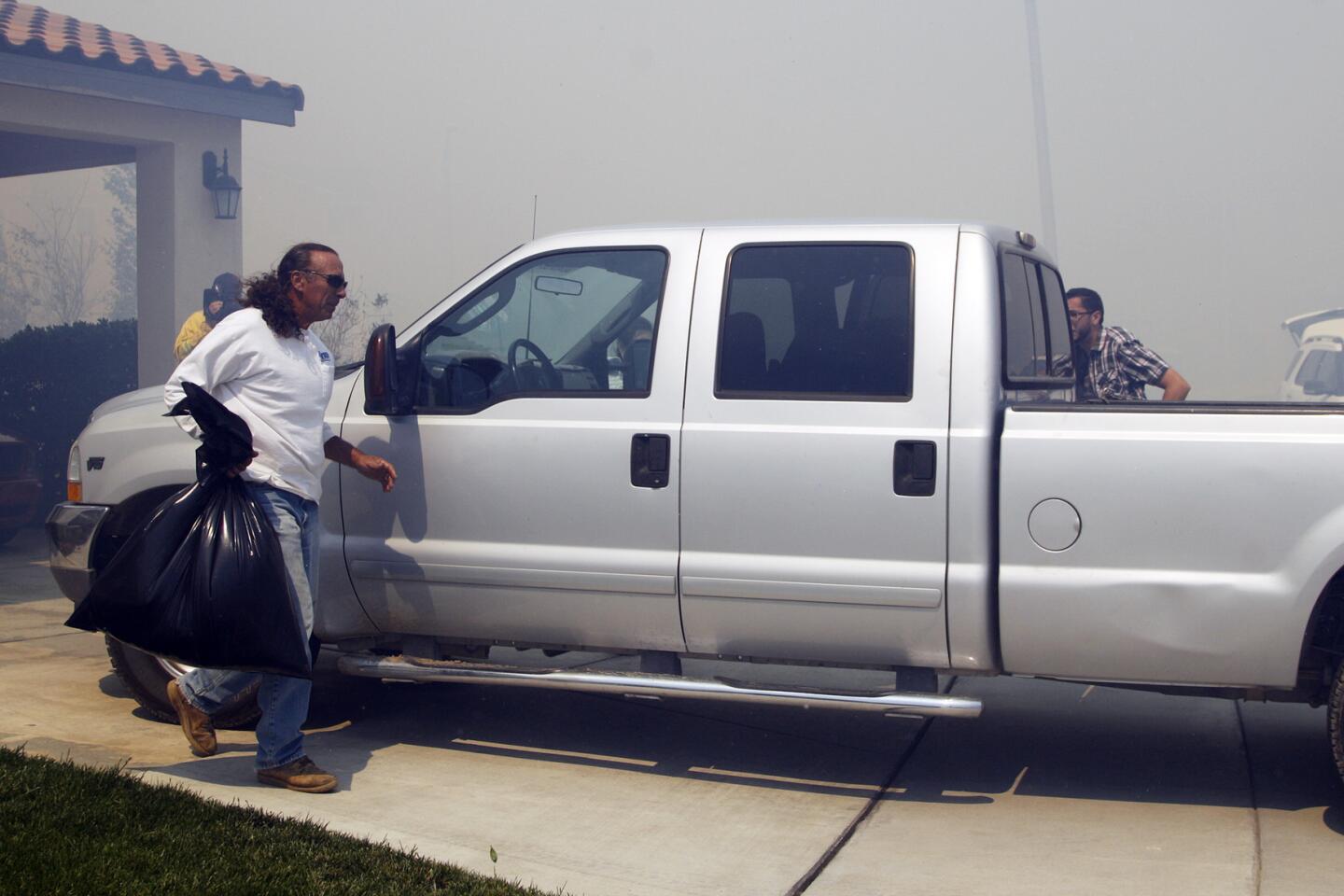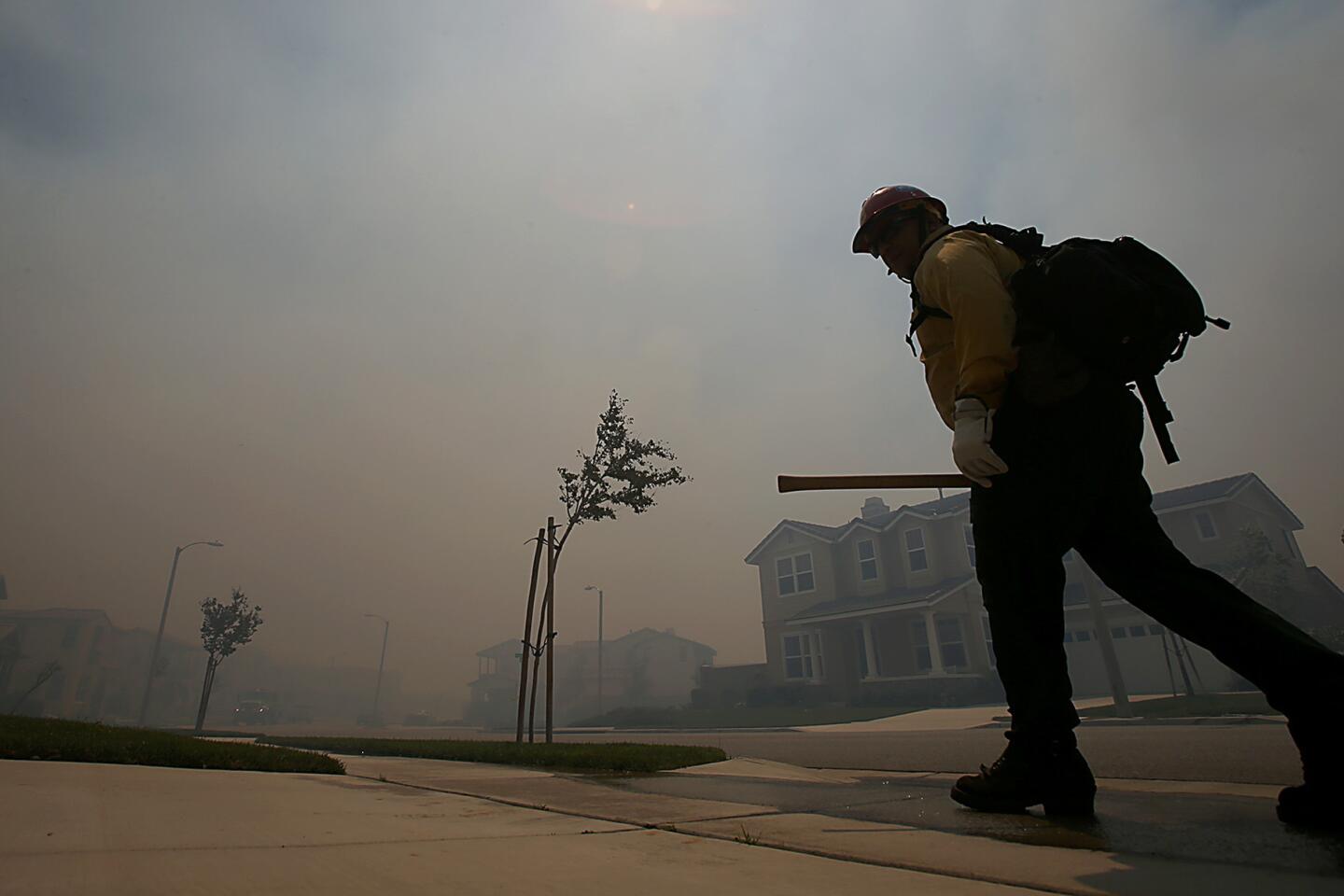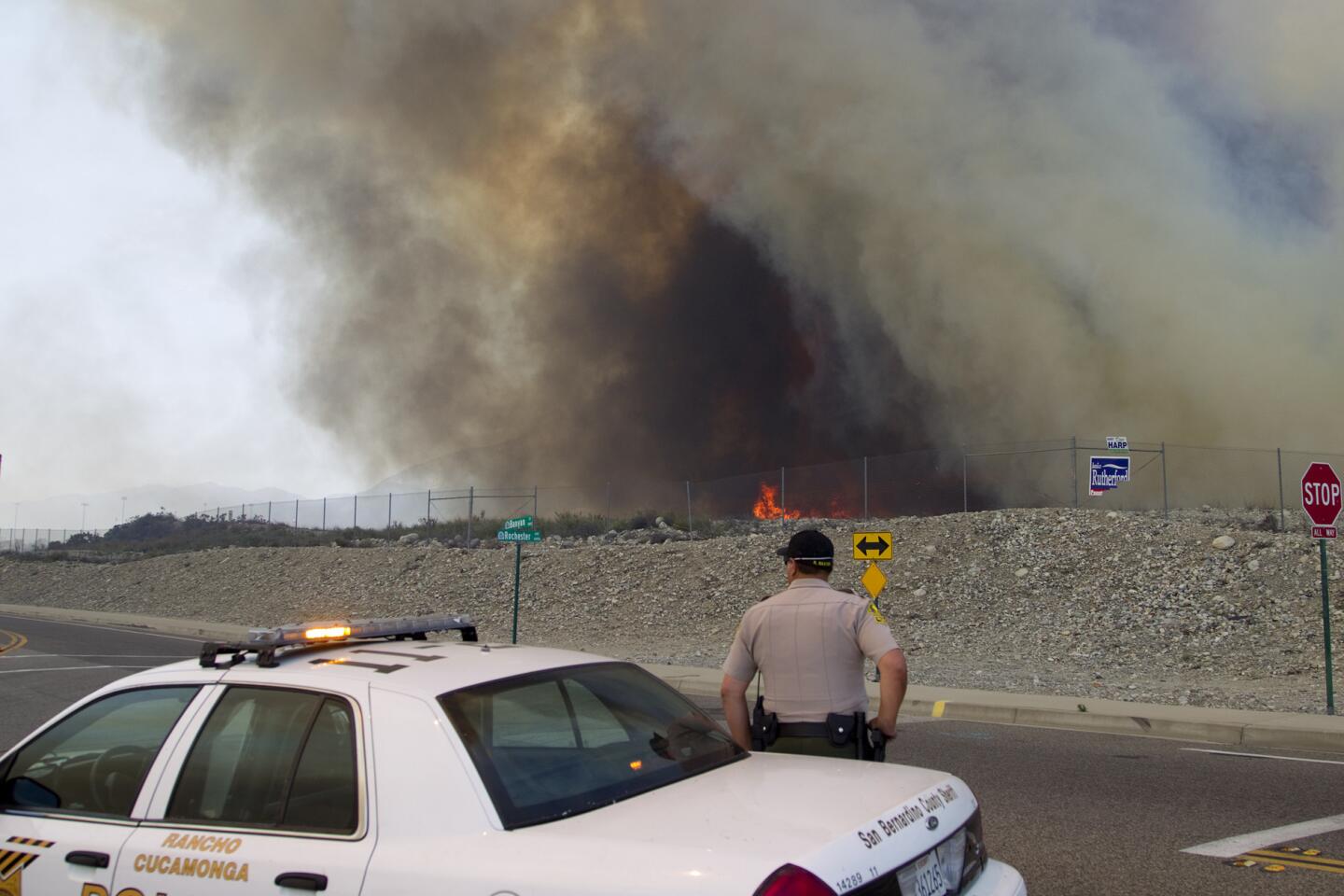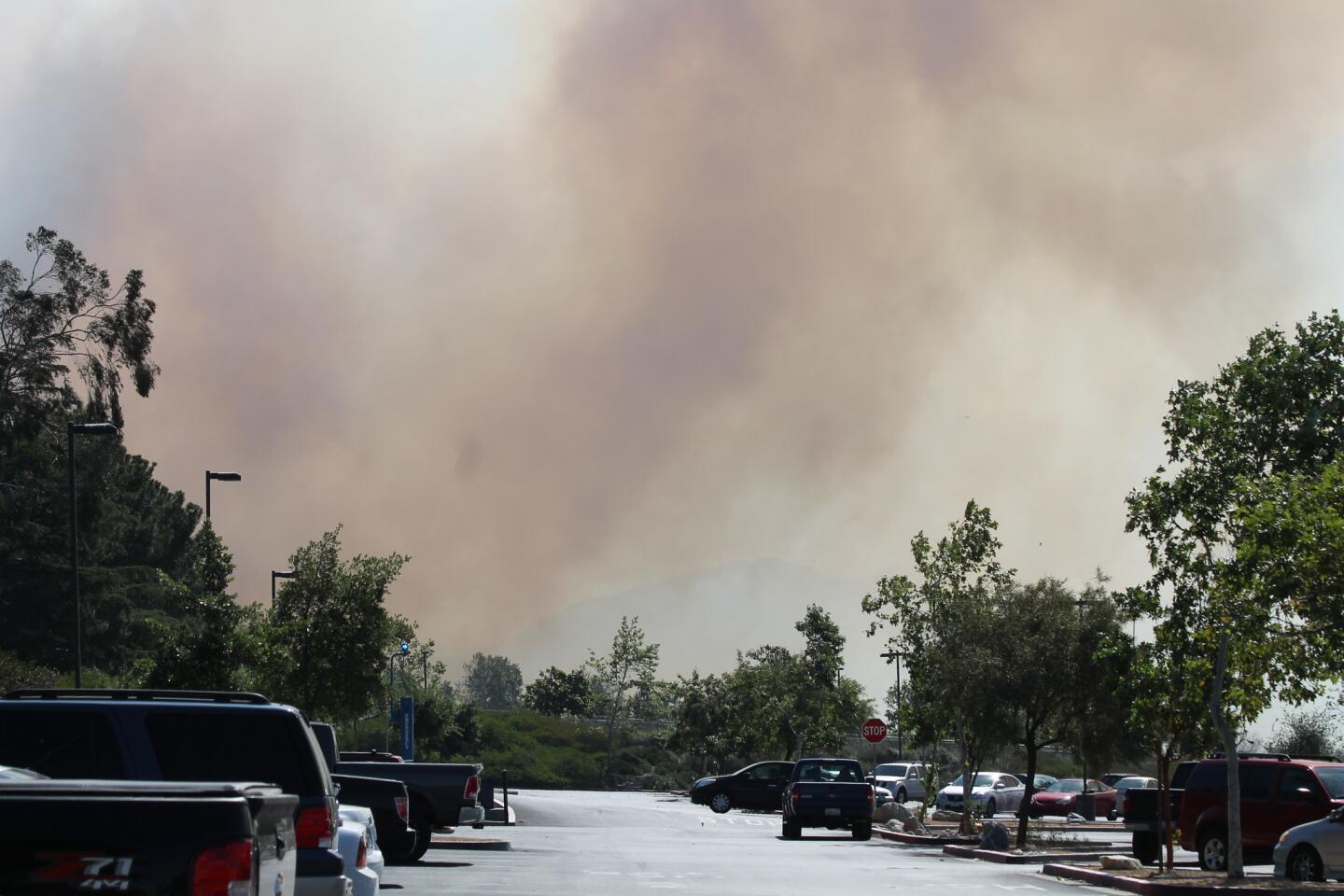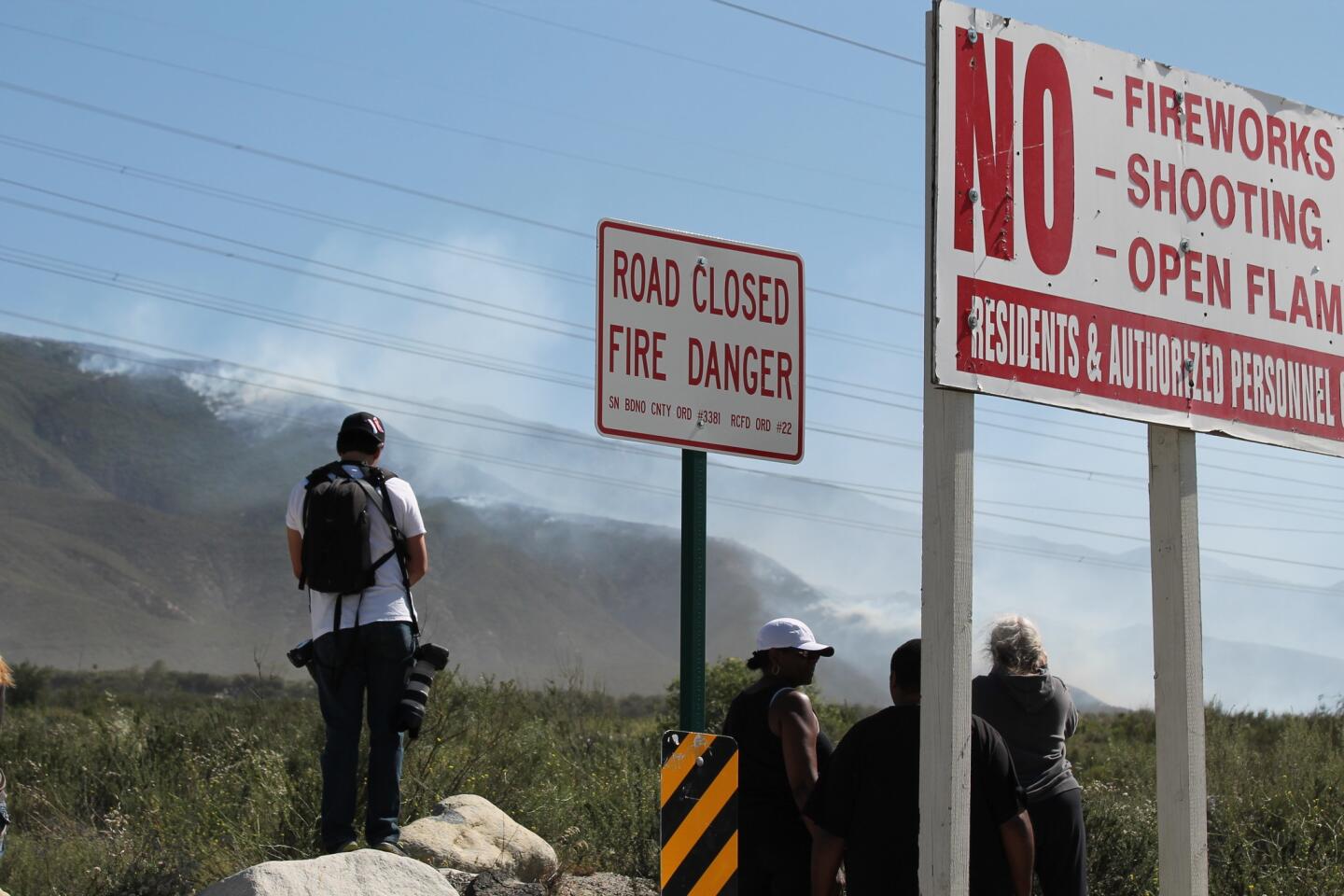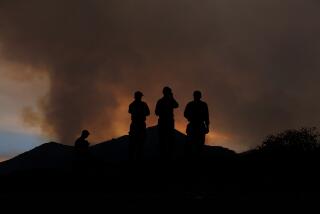Wildfire threatens Rancho Cucamonga homes as residents watch, flee
- Share via
As the wind-driven wildfire in the San Bernardino National Forest spread Wednesday to the edge of Rancho Cucamonga, many residents fled while others watched as firefighters worked to protect their homes.
Barbora Konecna, 40, watched as a half-dozen firefighters worked around her Banyan Street home, clearing brush and spraying water on its roof. All of the sprinklers in the yard were on, dousing the vegetation and eucalyptus trees that surrounded the two-story house.
Konecna saw some smoke when she left her house about 8 a.m. to take her children to school, but said she didn’t think much of it. By the time she returned home to grab her kids’ forgotten snacks, the smoke was thicker and the winds were blowing smoke directly toward her house.
Konecna packed up her family’s documents and important belongings, and called a friend to figure out how to turn on the safety sprinklers that came with her house. The firefighters arrived soon after, parking two rigs on her property.
“Any time they tell me it’s time to go, I can get out of here. I don’t want to be in anyone’s way,” she said. “With the wind going the way it is, you just don’t know.”
The Etiwanda fire exploded in size over the morning, from 20 acres when it was first reported shortly after 8 a.m. to more than 800 acres by midday, fueled in large part by hot, dry conditions and powerful Santa Ana winds. Some gusts hit 80 mph, preventing air crews from making water drops all morning, U.S. Forest Service officials said.
Roughly 1,650 homes had been evacuated at the base of the burn area by 2 p.m.
Konecna was teary-eyed as she watched, wondering aloud whether her home would survive.
“I thought, ‘Am I coming back here tomorrow?’ ” she said. “It’s emotional, but as long as everybody’s safe, we’re OK.”
Rancho Cucamonga Fire Capts. Mike McCliman and Ty Harris were two of the firefighters at Konecna’s house. They surveyed the thick, black smoke billowing across a nearby field, a hot spot spewing reddish flames less than 200 yards away.
“It’s a real messy fire,” Harris said.
The main concern, Harris said, were the “very erratic” winds. He recalled the 2003 Grand Prix fire, which burned in the same area.
“We stood right here on Banyan and watched the fire do the same thing,” he said.
An estimated 550 personnel and 30 engines were assigned to fight the blaze with aircraft available, according to the Forest Service.
The South Coast Air Quality Management District, meanwhile, issued a smoke advisory for portions of western San Bernardino and Riverside counties, as well as eastern Los Angeles County as air quality reached unhealthful levels due to the fire.
The Etiwanda fire was first spotted in the Day Canyon area north of the 210 Freeway, according to the Forest Service.
The mandatory evacuation area included homes north of Wilson Avenue, between Etiwanda Avenue and Day Canyon Wash, directly below the wildfire. The zone was also expanded on the eastern front to include homes on Banyan Street.
A temporary shelter was set up for evacuees at Central Park, at the northwest corner of Milliken Avenue and Base Line Road. Animals can also be taken to the county animal shelter at 19777 Shelter Way in Devore, which can be reached at (909) 887-8055.
More to Read
Sign up for Essential California
The most important California stories and recommendations in your inbox every morning.
You may occasionally receive promotional content from the Los Angeles Times.
